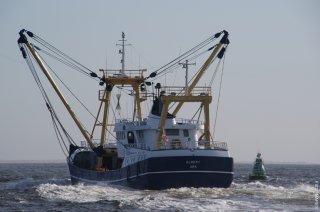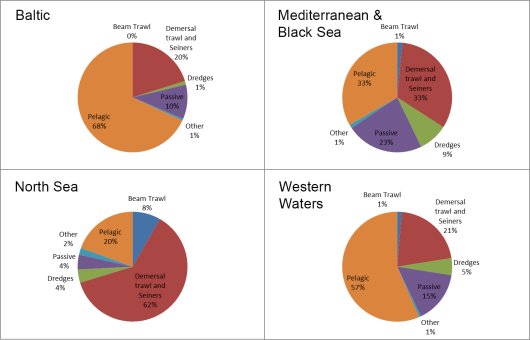
Regional fishery impacts in Europe
Which fishery is causing the highest impact on the benthic ecosystem? BENTHIS zoomed in on 4 European regions.
- mortality of benthic organisms from direct contact of the gear with the sea bed during fishing.
- habitat alterations through disturbance of sediments and biogenic habitats
- geo-chemical processes from disturbance of sediment
- food subsidies from discards and gear track mortality.
The contribution of these gears to the total landings is illustrated in the pie chart below for the BENTHIS case study regions Baltic Sea, North Sea, Mediterranean Sea and Black Sea and Western Waters.
In the next phase of the project, we will estimate footprints of the four active demersal gear types, based on the sea-bed contact of the individual components of the gear. For such technical information on gears, we have questioned the European and Turkish fishing industries. In the end, footprints per gear type will be combined with Vessel Monitoring System data (VMS: monitoring of ships by satellites) and logbook data of fishing effort, to provide fine-scale mapping of fishing pressure from physical gear-seabed interactions for each BENTHIS case study region.

The proportion of total yearly fishing effort of member states in 2010 split on regions and vessel groups according to expected benthic impact (data from STECF-12-10).
